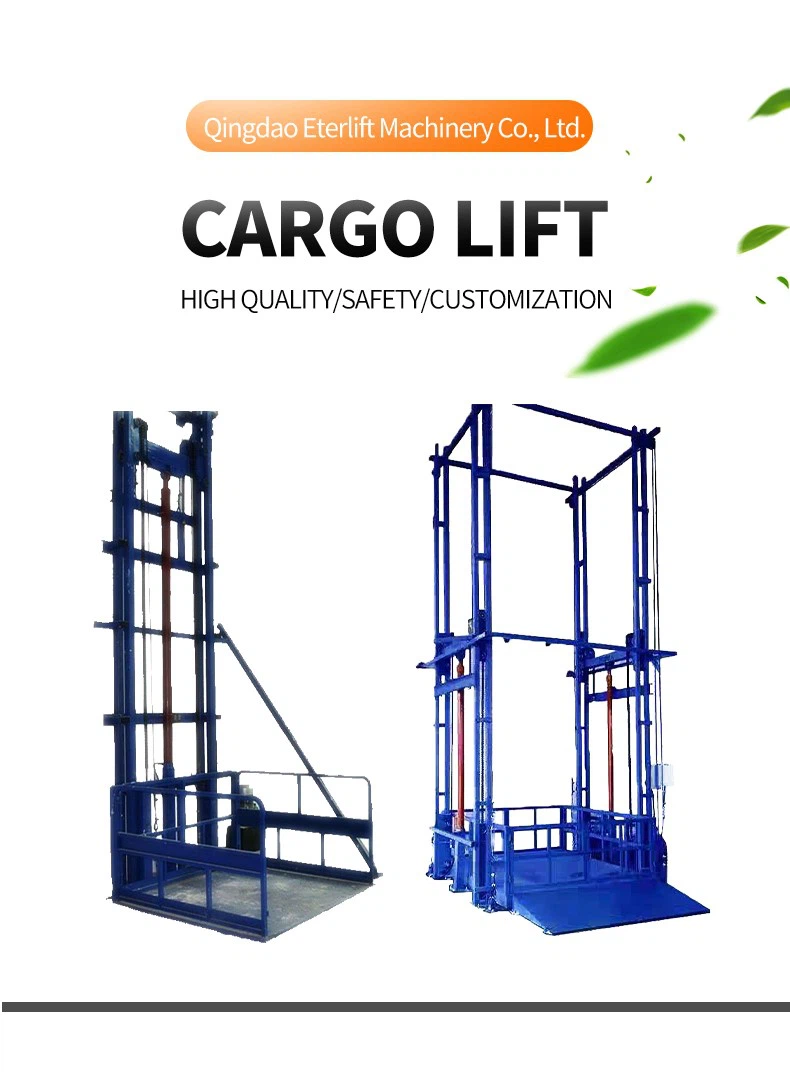





Installing a guide rail freight elevator is a complex process that typically requires professional expertise due to the precision and safety considerations involved. However, here is a general overview of the steps involved in installing a guide rail freight elevator:
1. Planning and Preparation
1. **Site Assessment:** Conduct a thorough assessment of the site to ensure it meets all the structural and spatial requirements for the elevator.
2. **Permits and Regulations:** Obtain necessary permits and ensure compliance with local building codes and regulations.
3. **Design Approval:** Finalize the design of the elevator, including the specifications of the guide rails, platform, hoisting mechanism, and safety features.
2. Construct the Elevator Shaft
1. **Structural Support:** Ensure the building structure can support the weight and dynamic loads of the elevator.
2. **Shaft Construction:** Construct the elevator shaft according to the design specifications, ensuring it is plumb and square.
3. **Openings:** Create openings for the elevator doors at each landing.
3. Install the Guide Rails
1. **Positioning:** Accurately position the guide rails within the shaft. The rails must be perfectly aligned vertically and horizontally.
2. **Mounting:** Securely mount the guide rails to the shaft walls using brackets and anchor bolts. Ensure the rails are straight and parallel.
3. **Bracing:** Install bracing between the guide rails to maintain stability and alignment.
4. Install the Hoisting Mechanism
1. **Hoist Motor and Machinery:** Install the hoist motor, gearbox, and control machinery at the designated location, usually at the top of the shaft or in a separate machine room.
2. **Ropes or Chains:** Attach the hoisting ropes or chains to the elevator platform and the hoist mechanism.
3. **Counterweights:** Install counterweights if the design requires them, ensuring they are properly balanced with the platform.
5. Install the Elevator Platform and Car
1. **Platform Assembly:** Assemble the elevator platform and car according to the manufacturer's specifications.
2. **Guide Shoes:** Attach guide shoes or rollers to the platform to ensure smooth movement along the guide rails.
3. **Safety Features:** Install safety devices such as limit switches, buffers, and emergency brakes.
6. Electrical Wiring and Controls
1. **Control Panel:** Install the control panel and connect it to the hoisting machinery, sensors, and call buttons at each landing.
2. **Wiring:** Run electrical wiring from the control panel to the motor, sensors, and other electrical components.
3. **Testing:** Test the electrical system to ensure proper operation of all controls and safety features.
7. Final Adjustments and Testing
1. **Alignment and Calibration:** Check and adjust the alignment of the guide rails, platform, and hoisting mechanism.
2. **Safety Testing:** Conduct thorough safety tests, including load tests and emergency stop tests, to ensure the elevator operates safely and reliably.
3. **Inspection:** Have the installation inspected by a qualified professional or regulatory authority to certify it meets all safety standards and regulations.
8. Handover and Training
1. **User Training:** Provide training to the building's maintenance personnel on the operation and maintenance of the elevator.
2. **Documentation:** Provide all necessary documentation, including operation manuals, maintenance schedules, and emergency procedures.





Hot Tags: two guide rail cargo elevator, China, manufacturers, suppliers, factory, customized, buy, cheap, for sale, made in China


















